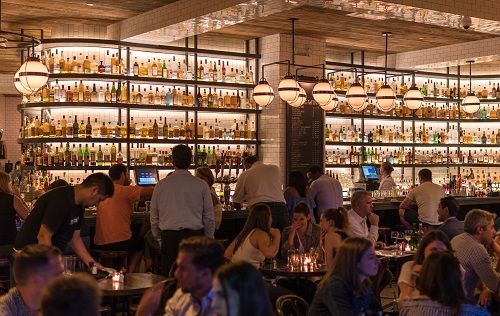
There are different rules in Feng Shui theory for assessing commercial spaces compared to residential spaces. And then, each commercial property or business will have unique characteristics that can be catered to, with enough advanced planning.
For example, the ideal entrance for a restaurant will be different than the ideal entrance to a doctor’s office.
With a restaurant, the ideal location for a kitchen will be in the best part of the floor plan. This is because the product being sold needs to be made in a positive area to yield the best result. How the best part of the floor plan is determined is based on non-obvious features, such as when the structure was built and the precise compass alignment of the structure. Fortunately, there is never just one good location for the kitchen. There can easily be several.
It is also important to create the best possible entrance. The entrance is going to either attract or repel the customers. Many establishments have entrances smack in the middle of the facing side of the restaurant. However, you often see a side door and the only way to determine the best entrance is through classical Feng Shui calculations.
A back office and the location of a cash register are also taken into consideration, but if the restaurant wants to have a busy bar scene, then that area of the restaurant would rank even higher than where money is actually collected. In fact, unlike a retail store, money is collected at each table, throughout the restaurant much of the time.
All of these principles can work beautifully in the design phase. But what happens when a Feng Shui specialist is needed AFTER the restaurant has been built, and with a flawed design? After a space has been built out, it is rare that the owner will be able to make significant structural changes to the space. In fact, the restaurant is usually seeking the services of a Feng Shui specialist when the business is not doing well, and therefore remodeling might be financially impossible.
Using the scope of what is available with interior décor and color, a Feng Shui practitioner can recommend that certain items be added or taken away. I have evaluated a number of restaurants that need water near their entrance. This is where wall mountable fountains can work as well as save on floor space. Some restaurants need the fire element on display and this can easily be accomplished with a red wall or art work.
The flow within the dining hall might need adjusting and this could be done with some of the tables, chairs and movable objects such as potted plants. Each restaurant is unique and there is no one set of rules for all.
In classical Feng Shui we can distinguish 144 different building types into four separate categories. Two of those four types are considered not very supportive for people and relationships. This does not bode well for the staff or the potential customers who may not feel relaxed when they are at the restaurant. Aside from the food quality and prices, many people will not return to a restaurant if they are not comfortable. Measures need to be taken to make sure patrons are happy when they are there so that they will want to return.
There are two major building types that are considered not supportive for financial luck and those building types need to be adjusted also. These measures require corrections on the outside of the restaurant, but if there is a patio or parking lot area to work with, the remedies can be done. Otherwise, when there is no control over the outside, then the emphasis has to be on the interiors.
Author: Kartar Diamond
Company: Feng Shui Solutions ® since 1992
From the Income, Money Matters and Career Blog Series

